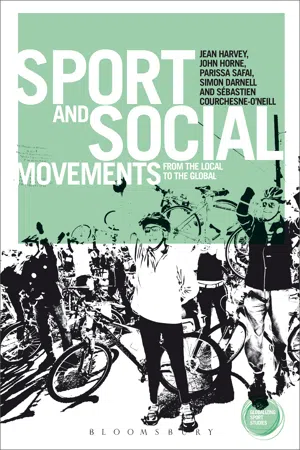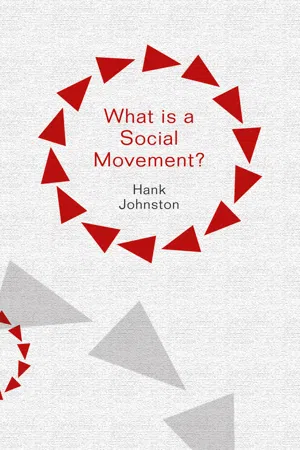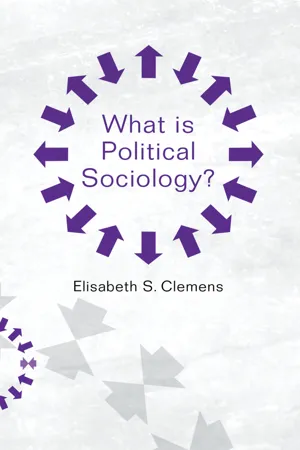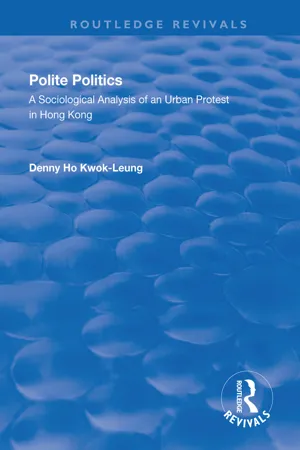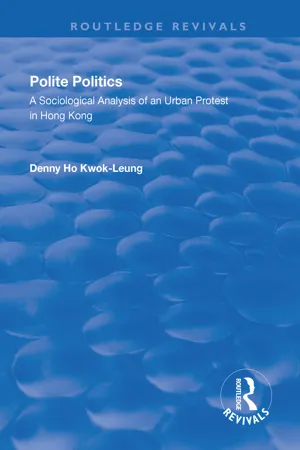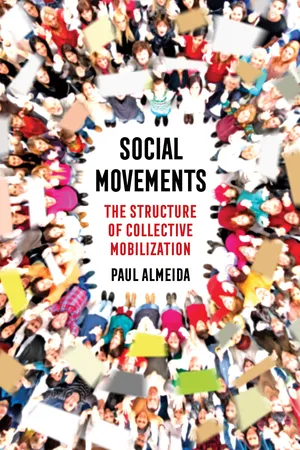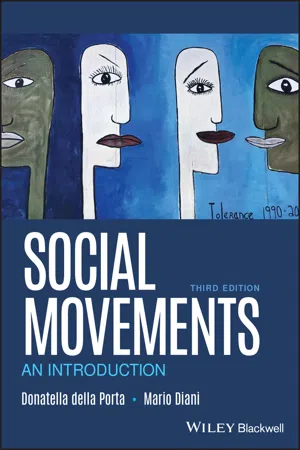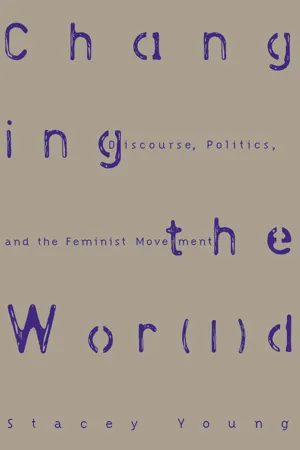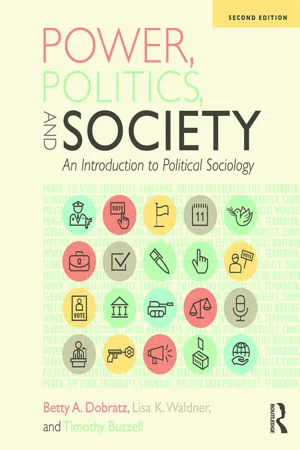Social Sciences
Social Movements and Social Change
Social movements are collective efforts by a group of people to bring about social, political, or cultural change. They often arise in response to perceived injustices or inequalities and seek to challenge existing power structures. Through various forms of activism, social movements aim to raise awareness, mobilize support, and ultimately influence policies and societal norms.
Written by Perlego with AI-assistance
Related key terms
Related key terms
1 of 4
Related key terms
1 of 3
12 Key excerpts on "Social Movements and Social Change"
- eBook - ePub
Sport and Social Movements
From the Local to the Global
- Jean Harvey, John Horne, Parissa Safai, Simon Darnell, Sebastien Courchesne-O'Neill(Authors)
- 2013(Publication Date)
- Bloomsbury Academic(Publisher)
1 Analysing Sport and (Global) Social Movements A s noted in the introduction, the term ‘social movement’ has been used quite loosely in both academic and popular discourse. In this chapter we discuss how the concept of ‘social movement’ has been understood and debated in academic literature in order to contextualize our use of the term in this book. For us, ‘movement’ implies a change over space and time; a relocation from one place to another and talk of social movements refers to the historical agency of social classes and other social collectivities in the shaping of society. Simply put then for us a social movement combines the idea of change with the notion of a strategy or intentionality and the coming together of dominated or minority social groups in efforts at social transformation (Bennett et al. 2005, pp. 224–5). Some writers about sport and society, for example, Jarvie with Thornton (2012, pp. 381ff), have suggested that sport itself should be considered as a social movement. From their viewpoint, in its organized form, it has characteristics such as informal interaction networks, shared beliefs and organizational goals that can be found in other social movements. We argue that such a broad and inclusive definition is too imprecise to help understand the differences between movements that have a progressive social agenda and those that do not, which includes several so-called ‘movements’ within sport. As we demonstrate in this book, rather than positioning sport itself as a social movement, it is more accurate to state that sport has often had a connection to social movements and social movements have influenced sport. For example, in Chapter 3 we show how various forms of the women’s rights movement and of feminism have influenced the development of a global women’s sport movement - eBook - ePub
Global Citizens
Social Movements and the Challenge of Globalization
- Marjorie Mayo(Author)
- 2013(Publication Date)
- Zed Books(Publisher)
Eyerman and Jamison 1991 : 4), although others have seen social movements as more durable phenomena.In addition, the four social movement themes that have been identified by Della Porta and Diani have relevance, to add to these varying definitions. These themes include informal interaction networks (as well as more formal ones, because formal organizations such as churches, trade unions and political parties can and do participate in social movements too) based upon shared beliefs and solidarity , engaging in collective action with a focus upon conflicts, and including the use of protest (Della Porta and Diani 1999 ). As Della Porta and Diani also recognize, however, shared beliefs and solidarity are not simply to be taken as givens in social movements. There are two-way processes at work here, as individuals and groups join on the basis of shared beliefs, which may then become strengthened through processes of participation in collective action and collective reflection on these shared experiences. As the previous chapter suggested, adult and community education perspectives may be of relevance here, focusing on the potential for experiential learning, backed by critical analysis, enabling social movement participants to strengthen their shared understandings of the causes as well as their shared commitments to the resolution of the issues around which they mobilize (Holst 2002 ).Such approaches to the definition of social movements could encompass a very wide range of mobilizations. The women’s movement and environmental and green movements would be included, for instance, together with movements for peace, civil liberties and human rights (including rights to self-determination and respect for a range of minorities – and indeed majorities in the case of the women’s movement). The trade union and labour movement would also be included, comprising, as it does, a range of networks and adherents, over and above the paid-up members of any particular constituent organization. So would fascist movements, as well as anti-fascist and anti-racist movements (there being nothing inherently progressive about social movements per se), pro- and anti-abortion movements and animal rights movements. All of these could be described as comprising networks sharing beliefs and solidarity, with commitments to collective action, including the use of varying forms of protest (whether violent and/or non-violent). - eBook - ePub
- Hank Johnston(Author)
- 2014(Publication Date)
- Polity(Publisher)
2 The Study of Social MovementsThis chapter tells a story of how an important field of study in the social sciences, one that spans sociology, political science, and social psychology, grew to maturity in the last half-century. In the United States, its adolescence was tumultuous, commencing amidst the numerous protests and social movements of the 1960s. The movements of that decade kindled widespread research attention to collective action, protest, social-change groups and their organization, and inspired a generation of scholars to systematically and empirically study these phenomena. Researchers sought to explain the black civil rights movement, the movement against the war in Vietnam, the women's movement, environmentalism, the Chicano movement, the new age movement, the hippie movement, student political radicalism, and political violence.There is a related story that will be also told in these pages: the honing of the tools of social science to study social movements and protest. In the 1960s, theorizing about collective behavior and social movements was less grounded in empirical research. At its best, it was based on systematic observation, informed reasoning, and logical deductions about causes and connections among apparently related phenomena. Many of the ideas were good ones, but that by itself does not make social science. This chapter traces how a field of research came of age as a community of scholars worked to refine theory using increasingly sophisticated research tools. In the US, a critical mass of social movement researchers was reached sometime around the mid-1970s, and their concepts, findings, methods, and debates took off exponentially thereafter. Today, the study of protests, social movements, and contentious politics is a major research focus in both North America and Europe, and its influence continues to grow. - No longer available |Learn more
- Elisabeth S. Clemens(Author)
- 2016(Publication Date)
- Polity(Publisher)
6 Social Movements and Social ChangeSocial stability is easily taken for granted. The way that the world was yesterday very often provides us with an accurate prediction of the way it will be tomorrow. But this piece of common sense leads us into a theoretical trap when it comes to understanding processes of social and political change. In order to understand how transformations are possible, it is necessary to start by highlighting the processes that maintain the already existing order. Recall Michael Mann's foundational argument about the character of “social cages” (chapter 1 ). The emergence of systems of ordered power relations is made possible by the development of interdependence and the benefits that individuals receive by virtue of their role in some division of labor. Despite acts of oppression and an unequal share of the harvest, individuals may choose to remain as subordinate members of a community with a system of irrigated agriculture rather than heading off on their own into the wild. This basic insight is shared with concepts of a more developed state as an organized system of extraction and coercion (Tilly 1992), systems in which those who gain the most from the arrangements will also exercise their capacity to block changes, particularly those that might lead to some redistribution either between different elites or between elites and masses (Kroneberg and Wimmer 2012; Skocpol 1980). Given such arrays of power, linked to the creation of those landscapes of castles, forts and temples, what are the conditions and processes that produce social change?At first glance, one obvious answer might be found in the emotions and interests of those who are disadvantaged within such arrangements: the field workers who are beaten, the peasants who are forced to surrender a significant portion of their harvest. Frantz Fanon's account of the anger and resentment stoked by relations of colonialism (chapter 2 - eBook - ePub
Polite Politics
A Sociological Analysis of an Urban Protest in Hong Kong
- Denny Ho Kwok-leung(Author)
- 2018(Publication Date)
- Routledge(Publisher)
2 Theories of Social Movements: A Review of the LiteratureIntroduction
The study of social movements became popular in the 1960s, an era in which protests and direct actions outside the formal political system played an important role in social change. This led to a growth in the general sociology literature of work informed by resource mobilization theories which considered protests and social movements to be the products of the political participation of rational people. This view is contrary to that offered by the dominant classical perspective which deemed collective action to be initiated by irrational people. Resource mobilization theorists emphasize the study of the process of collective actions and their impacts on social change. In urban sociology, Pickvance (1977) suggested that it might be fruitful to adopt this perspective to study the process of translating a social base to a social force. The study of this aspect in urban sociology seems necessary since the development and dynamics of urban movements have received little attention (Hannigan, 1985). Later Pahl (1989) in his evaluation of class analysis pointed out that the analysis of urban movements often invoked a structure-consciousness-action chain to theorize its origin, but had in practice given little attention to the mechanisms by which the social group in question acquired the 'consciousness' that guided and informed its actions. Despite such awareness of the need to study the relationship between action and structure, little effort has been put into this question (Giddens, 1984).This chapter reviews the existing literature on social movements, and in doing so brings out the main theoretical issues concerning the analysis of urban movements. Our aim is to develop a more useful and coherent theoretical framework to understand urban movements in a specific social and political context. Another objective of this chapter is to bring out the theoretical issues pertinent to the analysis of locally based urban movements. We shall argue that the strategy of an urban movement is an adequate dependent variable, and that the analysis of the process of its formulation and implementation is the key to unravelling the complexity and dynamics of urban movements. We shall start with a brief review of the classical perspective on collective action in section 2.1. Section 2.2 discusses the resource mobilization perspective. Although there are problems in this perspective, we shall draw on the analytical classification of resource acquisition for the study in this thesis. In sections 2.3 and 2.4, we explore and examine two recent theoretical models, that is, the political process model and the social construction of protests, and try to show that these two models are complementary to the resource mobilization perspective. At the end of each section, we point out the major shortcomings of the perspectives. In section 2.5, we link up the resource mobilization perspective with the political process and social construction models, and illustrate a possible way of using their conceptual and analytical elements in our analysis of social movements. - eBook - ePub
Polite Politics
A Sociological Analysis of an Urban Protest in Hong Kong
- Denny Ho Kwok-leung(Author)
- 2020(Publication Date)
- Routledge(Publisher)
2 Theories of Social Movements: A Review of the LiteratureIntroduction
The study of social movements became popular in the 1960s, an era in which protests and direct actions outside the formal political system played an important role in social change. This led to a growth in the general sociology literature of work informed by resource mobilization theories which considered protests and social movements to be the products of the political participation of rational people. This view is contrary to that offered by the dominant classical perspective which deemed collective action to be initiated by irrational people. Resource mobilization theorists emphasize the study of the process of collective actions and their impacts on social change. In urban sociology, Pickvance (1977) suggested that it might be fruitful to adopt this perspective to study the process of translating a social base to a social force. The study of this aspect in urban sociology seems necessary since the development and dynamics of urban movements have received little attention (Hannigan, 1985). Later Pahl (1989) in his evaluation of class analysis pointed out that the analysis of urban movements often invoked a structure-consciousness-action chain to theorize its origin, but had in practice given little attention to the mechanisms by which the social group in question acquired the ‘consciousness’ that guided and informed its actions. Despite such awareness of the need to study the relationship between action and structure, little effort has been put into this question (Giddens, 1984).This chapter reviews the existing literature on social movements, and in doing so brings out the main theoretical issues concerning the analysis of urban movements. Our aim is to develop a more usefiil and coherent theoretical framework to understand urban movements in a specific social and political context. Another objective of this chapter is to bring out the theoretical issues pertinent to the analysis of locally based urban movements. We shall argue that the strategy of an urban movement is an adequate dependent variable, and that the analysis of the process of its formulation and implementation is the key to unravelling the complexity and dynamics of urban movements. We shall start with a brief review of the classical perspective on collective action in section 2.1. Section 2.2 discusses the resource mobilization perspective. Although there are problems in this perspective, we shall draw on the analytical classification of resource acquisition for the study in this thesis. In sections 2.3 and 2.4, we explore and examine two recent theoretical models, that is, the political process model and the social construction of protests, and try to show that these two models are complementary to the resource mobilization perspective. At the end of each section, we point out the major shortcomings of the perspectives. In section 2.5, we link up the resource mobilization perspective with the political process and social construction models, and illustrate a possible way of using their conceptual and analytical elements in our analysis of social movements. - eBook - ePub
Social Movements
The Structure of Collective Mobilization
- Paul Almeida(Author)
- 2019(Publication Date)
- University of California Press(Publisher)
3
Theories of Social Movement Mobilization
The previous chapter focused on the methods of social movement research. We examined how to classify different levels of collective action and various approaches to collecting systematic information on the multiple dimensions of movement activities. In this chapter, we shift from concrete tools for observing social movements to more abstract theories explaining their origins and trajectories. Theories reduce the social world into the most important causal dimensions in explaining empirical patterns and outcomes. Scholars strive for parsimony in their explanations of the dynamics of social change. For social movements, we employ conceptual frameworks to understand specific subfields such as movement emergence, ideology, recruiting networks, and movement outcomes, which I elaborate in subsequent chapters. At the same time, there are theoretical perspectives within studies of social movements that have set the parameters for the entire field.This chapter begins with a brief discussion of how different types of theories and models are used to explain particular components of the mobilization process. A short presentation of the evolution of the paradigmatic social movement frameworks is followed by sustained attention to the political process model—arguably the dominant model of contemporary social movement research. The chapter provides an overview of both political opportunity (“good news”) and threat (“bad news”) versions of political process theory (Meyer 2002; 2004) and the importance of organizational infrastructures for mobilization (McCarthy 1996; Andrews 2004; Edwards et al. 2018). The chapter concludes with brief introductions of emerging theoretical perspectives, including approaches examining emotions, multiple institutions beyond the state, intersectionality, and even right-wing movements (such as the alt-right). - eBook - ePub
Social Movements
An Introduction
- Donatella della Porta, Mario Diani(Authors)
- 2020(Publication Date)
- Wiley-Blackwell(Publisher)
CHAPTER 1 The Study of Social Movements : Recurring Questions, (Partially) Changing AnswersIn the late 1960s, the world was apparently undergoing deep, dramatic transformations – even a revolution, some thought. American civil rights and antiwar movements, the Mai 1968 revolt in France, students’ protests in Germany, Britain, or Mexico, the workers‐students coalitions of the 1969 Hot Autumn in Italy, the pro‐democracy mobilizations in as diverse locations as Francoist Madrid and communist Prague, the growth of critical Catholicism from South America to Rome, the early signs of the women’s and environmental movements, that would have shaped the new politics of the 1970s: all these phenomena – and many more – suggested that deep changes were in the making. In 2018, the fiftieth anniversary of 1968 has stimulated reflections on its long‐term effects not only on society and politics, but also on social movement studies (della Porta 2018a).Accordingly, the study of social movements developed to an unprecedented pace into a major area of research. If, at the end of the 1940s, critics lamented the “crudely descriptive level of understanding and a relative lack of theory” (Strauss 1947 , p. 352), and in the 1960s complained that “in the study of social changes, social movements have received relatively little emphasis” (Killian 1964 , p. 426), by the mid‐1970s, research into collective action was considered “one of the most vigorous areas of sociology” (Marx and Wood 1975 ). At the end of the 1980s, commentators talked of “an explosion, in the last ten years, of theoretical and empirical writings on social movements and collective action” (Morris and Herring 1987 , p. 138; also see Rucht 1991 ).Today, the study of social movements is solidly established, with specialized journals, book series, and professional associations. The excitement and optimism of the roaring 1960s may be long gone, but social and political events over the last four decades have hardly rendered the investigation of grassroots activism any less relevant or urgent. To the contrary, social movements, protest actions and, more generally, political organizations unaligned with major political parties or trade unions have become a permanent component of Western democracies. It is no longer possible to describe protest politics, grassroots participation, or symbolic challenges as unconventional. References to a “movement society” (Dodson 2011 ; McCarthy, Rafail, and Gromis 2013 ; Melucci 1996 ; Meyer and Tarrow 1998 ; Soule and Earl 2005 - eBook - ePub
Changing the Wor(l)d
Discourse, Politics and the Feminist Movement
- Stacey Young(Author)
- 2014(Publication Date)
- Routledge(Publisher)
5 Social Movement TheorySome social movement1 theorists and women's movement scholars are beginning to acknowledge that a social movement's success in securing fundamental social transformation may best be indicated by the degree to which the movement's ideas become an integral part of a culture, influencing people's world views and their individual and collective actions. In general, however, this remains a minority view. Despite growing acknowledgment among scholars of the need to assess social movement success in terms of both policy change and more fundamental transformation, social movement theorists and scholars of the women's movement continue to assert that social movement success is indicated by the degree to which movement organizations become part of the policy process, working within that process to influence legislation and other social policy. Yet this is but one form of success; it is not the only—or even the most far-reaching—form. For students of the contemporary women's movement, then, the question remains: why do the women's movement studies fall short of representing and exploring feminist activism in all its complexity? Why, in particular, do they so often ignore the discursive activities aimed at effecting radical change in dominant ideologies?The answer to this question lies in the studies' liberal theoretical underpinnings, and the methodologies that follow from them. The studies are theoretically grounded in liberal constructions of power and domination, resistance and social change. A look at the history and development of social movement theory helps to illuminate the reasons contemporary studies of the women's movement conceive of power, domination, resistance, and social change as narrowly as they do.Prior to the 1960s, the study of collective behavior was grounded mainly in variations of "frustration-aggression theory," which emphasized grievances or deprivation as the root cause of collective action. Deprivation could be absolute or relative, but it was assumed to be the engine of social movement activity.2 - eBook - ePub
Power, Politics, and Society
An Introduction to Political Sociology
- Betty Dobratz, Lisa Waldner, Timothy Buzzell(Authors)
- 2019(Publication Date)
- Routledge(Publisher)
Box 8.2 .TEXT BOX 8.2 Why Social Movements MatterOne of the most difficult tasks for social movement theorists is identifying how social movements actually make a difference and how they create social change. In general, there are three areas of agreement about how social movements make a difference. Social movements can influence political, cultural, and social changes. Political changes include gaining (a) acceptance (i.e. recognition by formal political bodies, representation in decision-making processes) and/or (b) new advantages (i.e. ability to set/influence political agenda, influence public policy, or influence long-term systemic change [Gamson 1975, 1990]). Cultural changes include influencing (a) attitudes, opinions, and values of the general public; (b) systems of knowledge or traditions (Earl 2000, 2004); or (c) the emergence of collective identities (Polletta and Jasper 2001). Finally, social changes include influencing (a) an individual social movement participant (i.e. shaping their life path, occupation, political involvement) or the life course patterns of large blocks of people (e.g. influence of the 1960s on the life chances and life goals of the Baby Boomers [Giugni 2004]) and (b) changes in social networks and the flow of social capital (Diani 1997).To demonstrate how social movements matter, let us examine the case of three localized “smart growth” movements. First, in 2003 in Ames, Iowa, a group of local citizens upset with a proposal for a new mall formed an SMO called the Ames Smart Growth Alliance (ASGA). The group led the charge against the proposed development and promoted planned growth that balanced economic, social, and environmental concerns. In 2005, in Brunswick, New York, after the local newspaper ran an article about a proposal for a new Wal-Mart Superstore and after learning about the proposal of four large residential developments, seventeen people formed Brunswick Smart Growth (BSG). BSG became the lead organization against the various proposals by voicing concern over the adverse effect these developments would have on the “town’s rural character.” Finally, in 2001 in Centreville, Maryland, a local developer proposed the development of thirty condominiums on land at the headwaters of the Corsica River referred to as the “Wharf” property. Approximately sixty local area residents came together to speak out against the proposal and formed the Citizens for Greater Centreville (CGC). - eBook - ePub
- Fabio de Nardis(Author)
- 2020(Publication Date)
- Palgrave Macmillan(Publisher)
The sociology of social movements today would not be separable from a representation of society as a system of social forces that dispute the direction of a cultural field (Touraine 1981), in which two antagonistic forces determine the type of transforming action that every society exercises on itself (Touraine 1977). The trait peculiar to post-industrial society, which the French sociologist prefers to call a “programmed” society, is seen as the control of information which becomes the main source of social power, thus shifting the conflict from manual workplaces to the mass media or the research areas. The central actors of these new conflicts are no longer social classes, linked to the industrial production of material goods, but social groups with opposing interests and orientations regarding the use of cognitive and symbolic resources (think for example of the temporary workers’ movement). The detection of new conflicts is connected to the emergence of new social actors linked to the middle class made up of individuals with high intellectual qualifications and tending to be employed in the services sector (Bell 1973 ; Gouldner 1979). So far, the link between structural transformations, new movements and new conflicts remains uncertain. We could say that the massive presence of these new movements reflects their need for cultural realisation, and at the same time it may reflect the traditional predisposition of the middle classes to public commitment. 10.2 Social Movements, Identities, Symbols and Emotions A fundamental aspect in the analysis of social movements is the role played by the symbolic and cultural dimension of collective action (Williams 2004) - Berch Berberoglu, Berch Berberoglu, Berch Berberoglu(Authors)
- 2018(Publication Date)
- Palgrave Macmillan(Publisher)
CrossrefPorpora, Douglas V. 2015. Reconstructing Sociology . New York: Cambridge University Press.CrossrefRochon, Thomas R. 1998. Culture Moves: Ideas, Activism, and Changing Values . Princeton, NJ: Princeton University Press.Rupp, Leila J., and Verta Taylor. 1987. Survival in the Doldrums: The American Women’s Rights Movement, 1945–1960s . New York, NY: Oxford University Press.Ryan, Charlotte, and William A. Gamson. 2006. The Art of Reframing Political Debates. Contexts 5 (1): 13–18.CrossrefSchwartz, Michael. 1976. Radical Protest and Social Structure . New York, NY: Academic Press.Seligman, Martin E.P., Peter Railton, Roy F. Baumeister, and Chandra Sripada. 2016. Homo Prospectus . Oxford: Oxford University Press.Smirnova, Michelle, and Melissa Wooten. 2012. Take 2: Where Did Capitalism Go? Critical Mass Bulletin 37 (2): 2–5.Snow, David A., and Robert D. Benford. 1992. Master Frames and Cycles of Protest. In Frontiers in Social Movement Theory , ed. A.D. Morris and C.M. Mueller, 133–155. New Haven, CT: Yale University Press.Snow, David A., and Dana M. Moss. 2014. Protest on the Fly: Toward a Theory of Spontaneity in the Dynamics of Protest and Social Movements. American Sociological Review . https://doi.org/10.1177/0003122414554081 .CrossrefSnow, David A., Anna E. Tan, and Peter B. Owens. 2013. Social Movements, Framing Processes, and Cultural Revitalization and Fabrication. Mobilization: An International Quarterly 18 (3): 225–242.Soule, Sarah A. 2007. Diffusion Processes within and across Movements. In The Blackwell Companion to Social Movements , ed. D.A. Snow, S.A. Soule, and H. Kriesi, 294–310. Malden, MA: Blackwell Publishing.CrossrefSwidley, Ann. 1986. Culture in Action: Symbols and Strategies. American Sociological Review 51 (2): 273–286.CrossrefTarrow, Sidney. 1993. Cycles of Contention: Between Moments of Madness and the Repertoire of Contention. Social Science History 17 (2).Crossref
Index pages curate the most relevant extracts from our library of academic textbooks. They’ve been created using an in-house natural language model (NLM), each adding context and meaning to key research topics.
Explore more topic indexes
Explore more topic indexes
1 of 6
Explore more topic indexes
1 of 4
